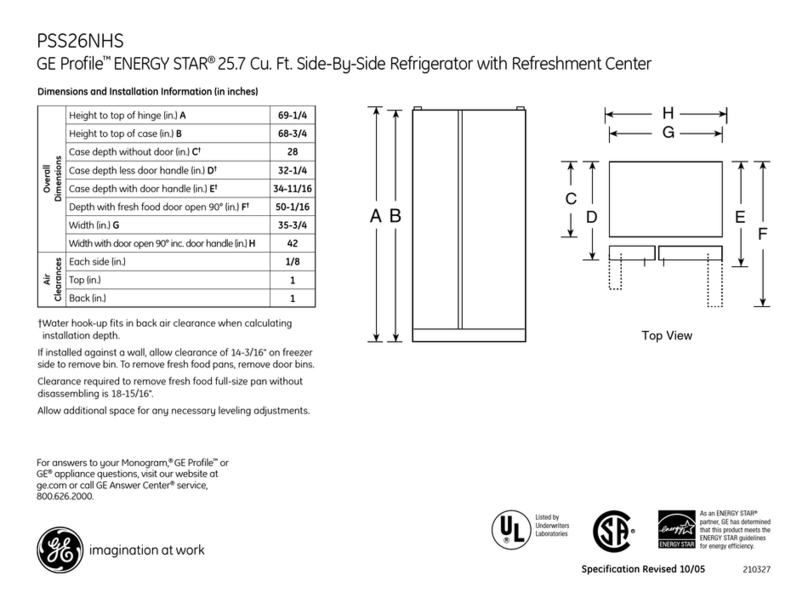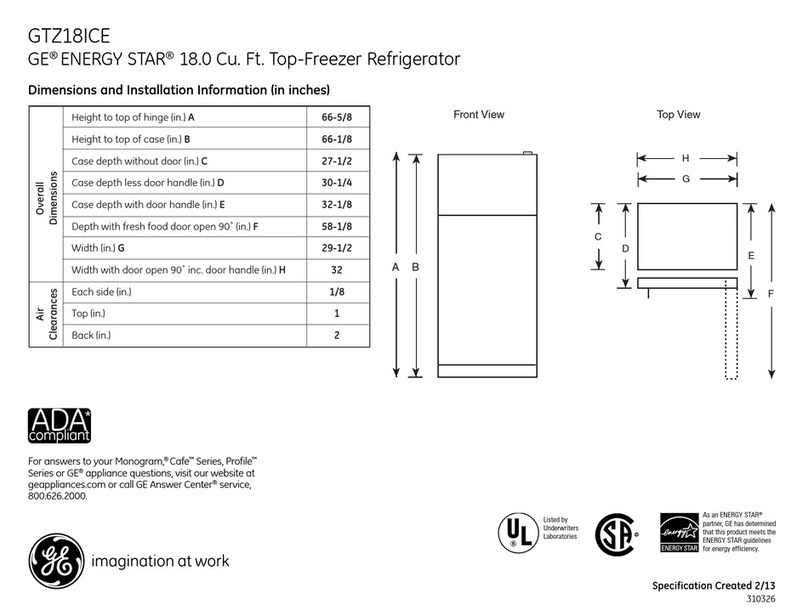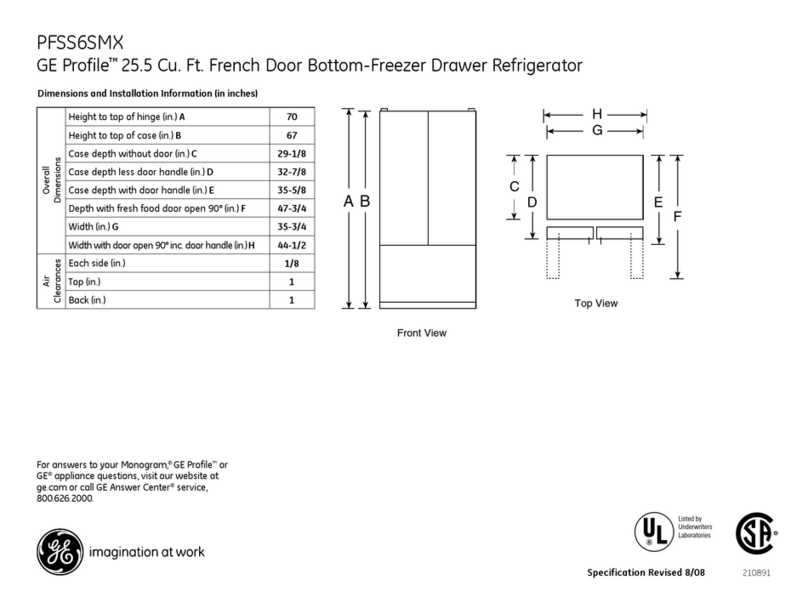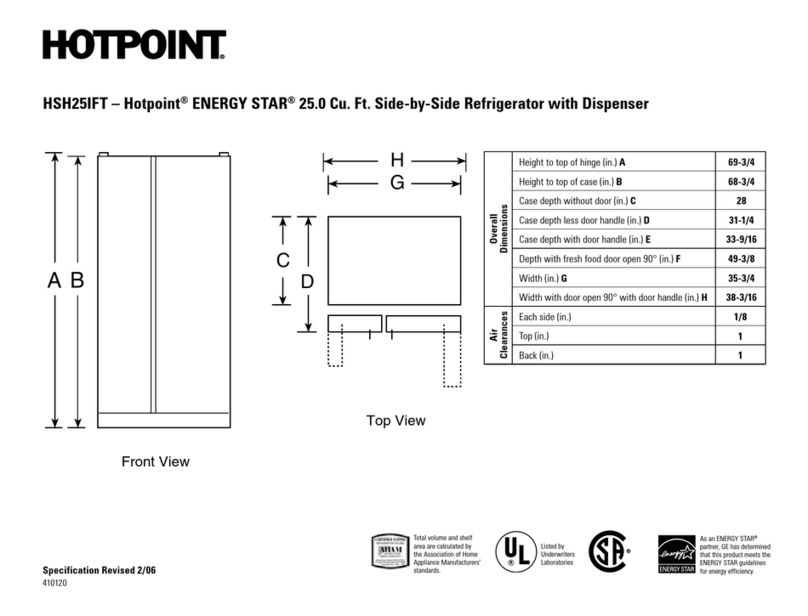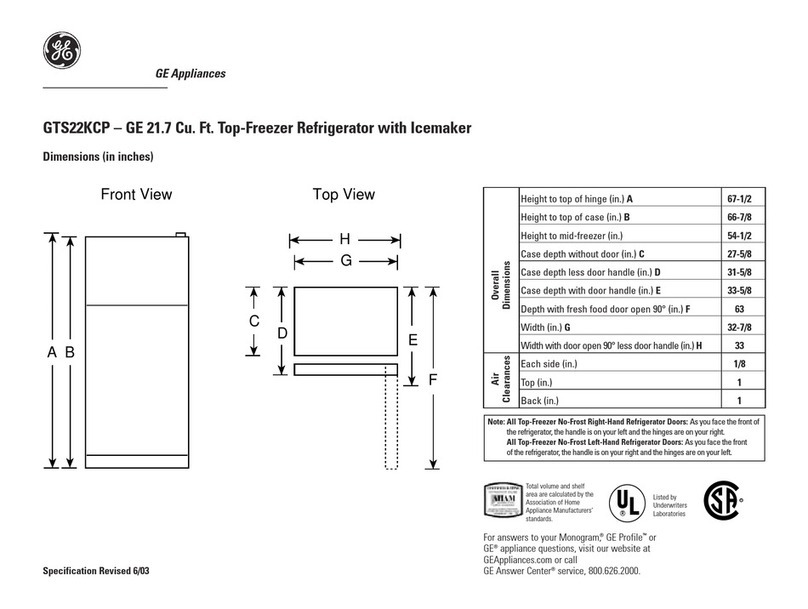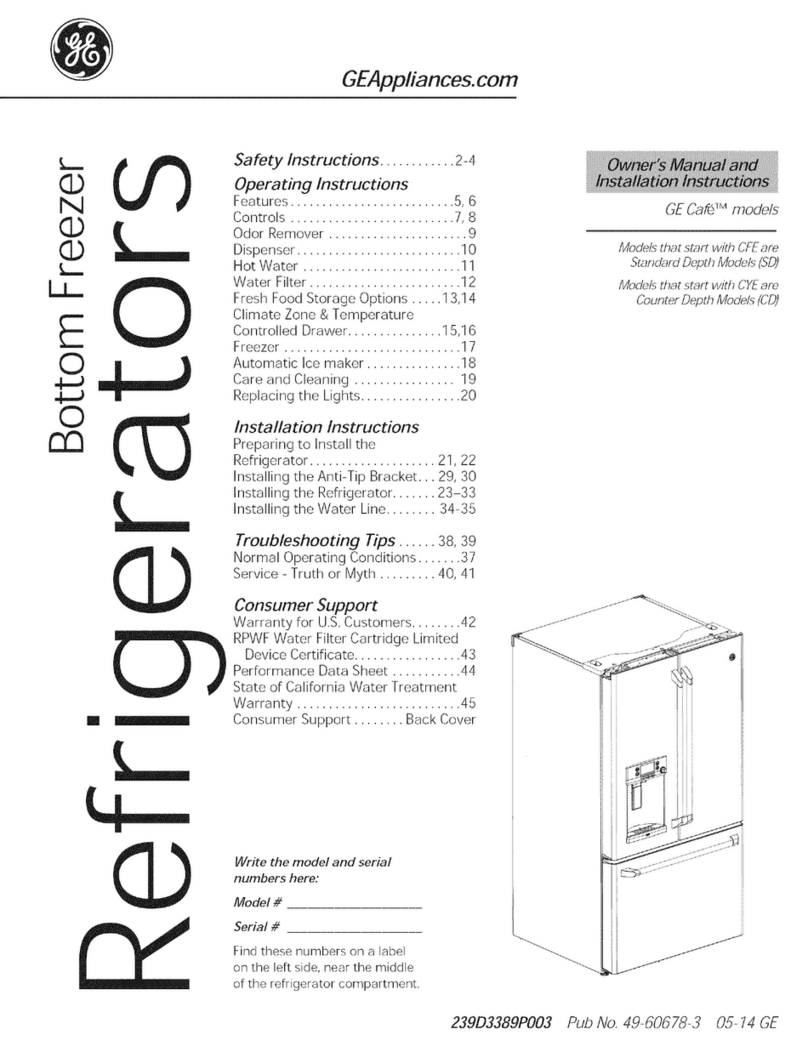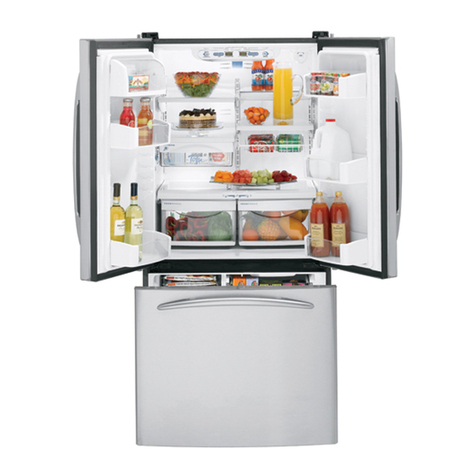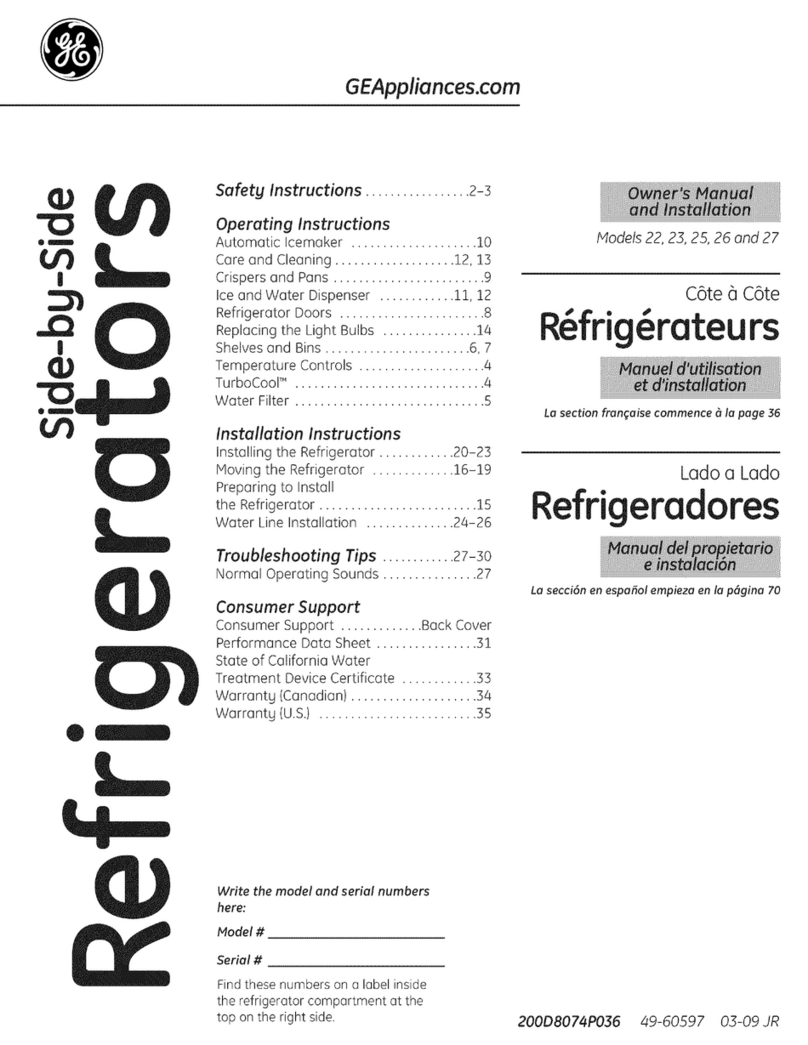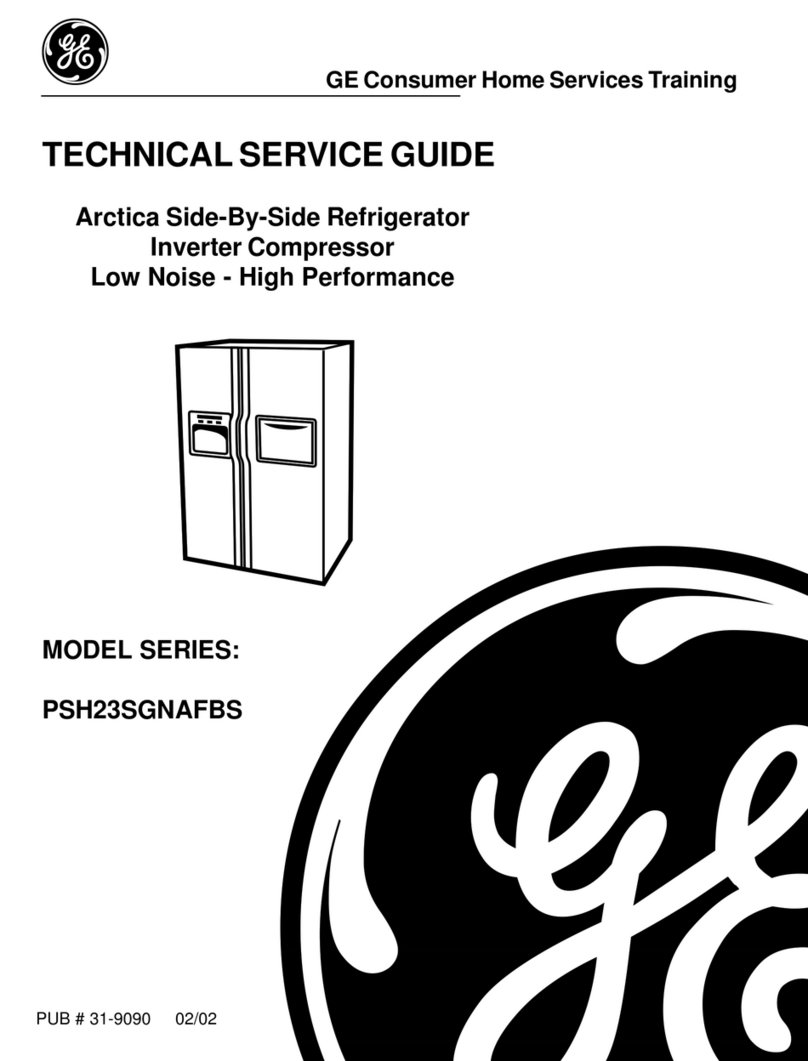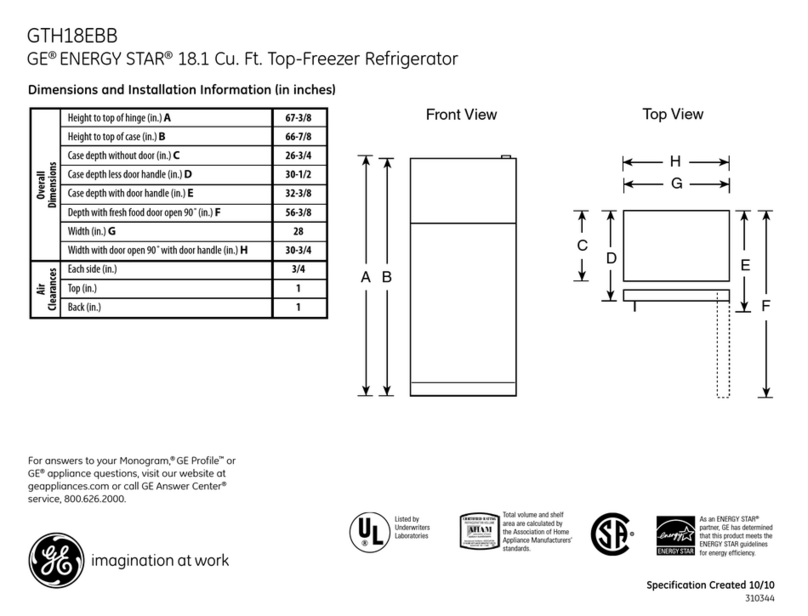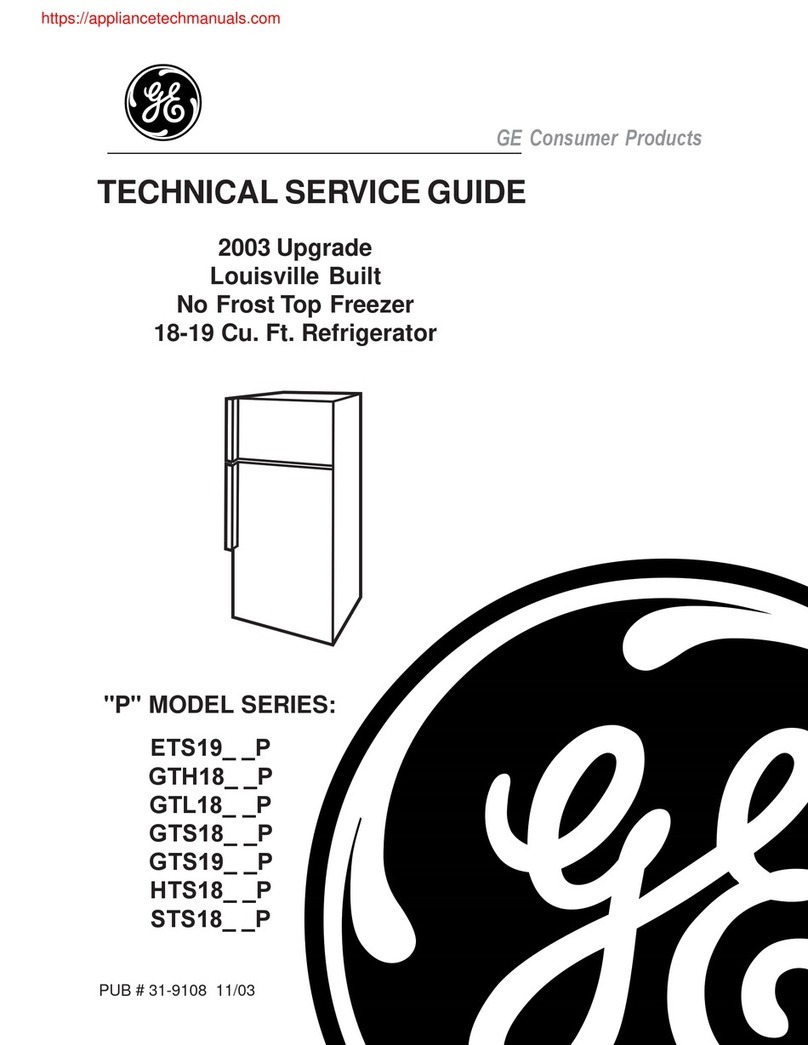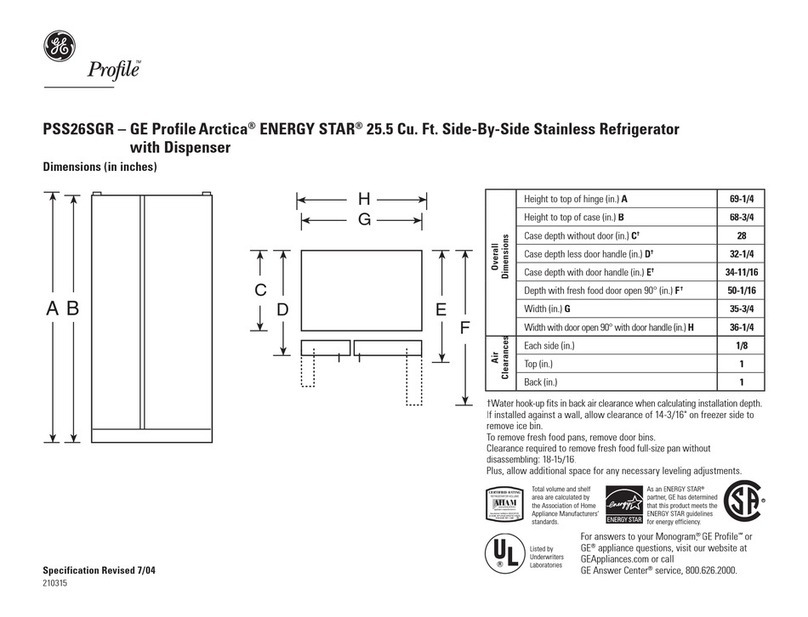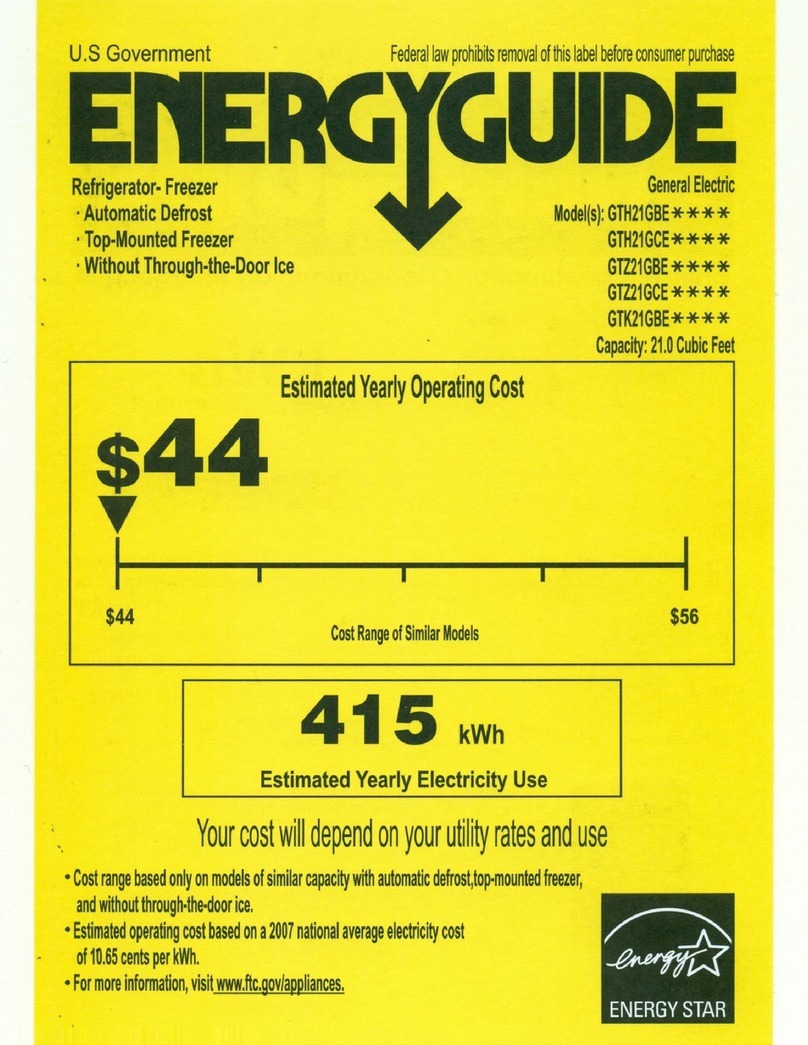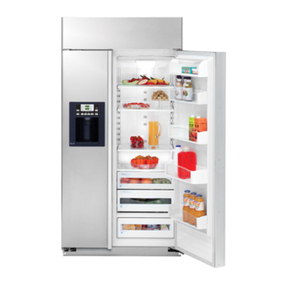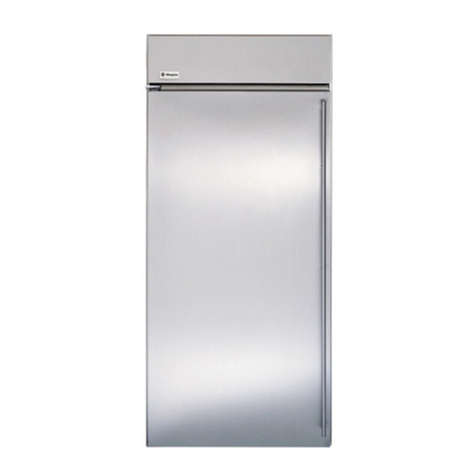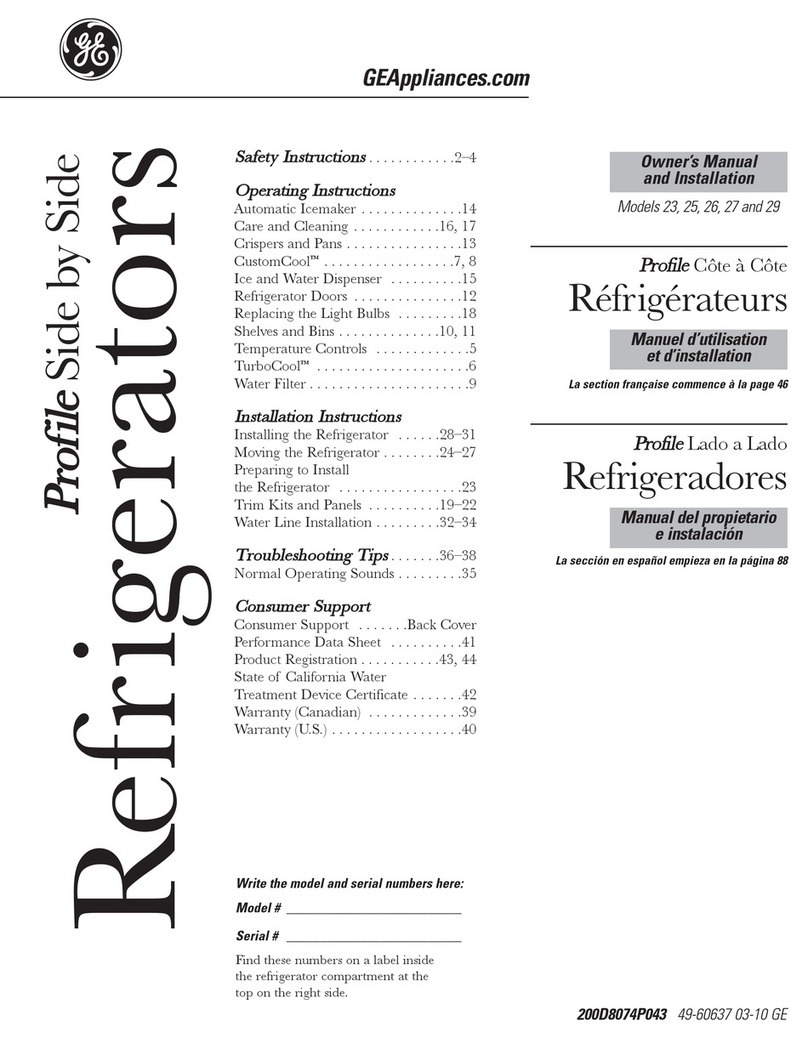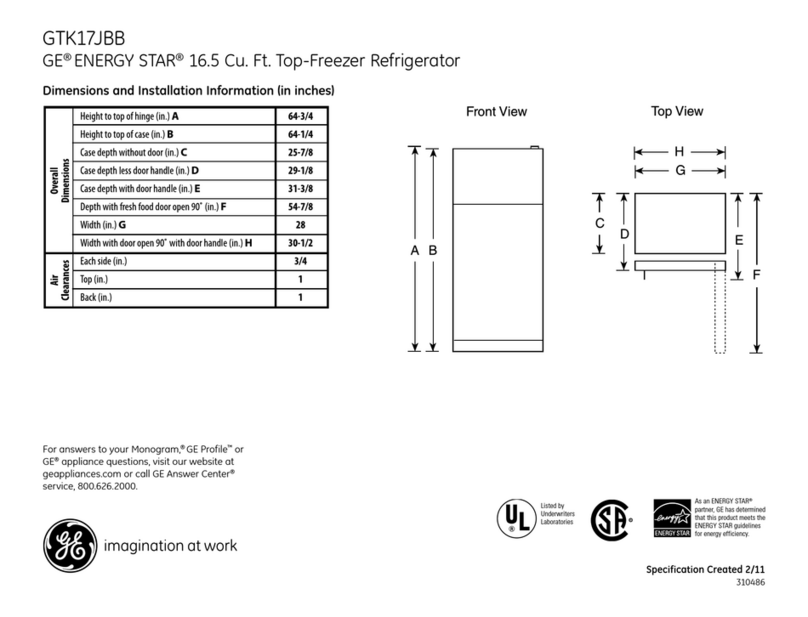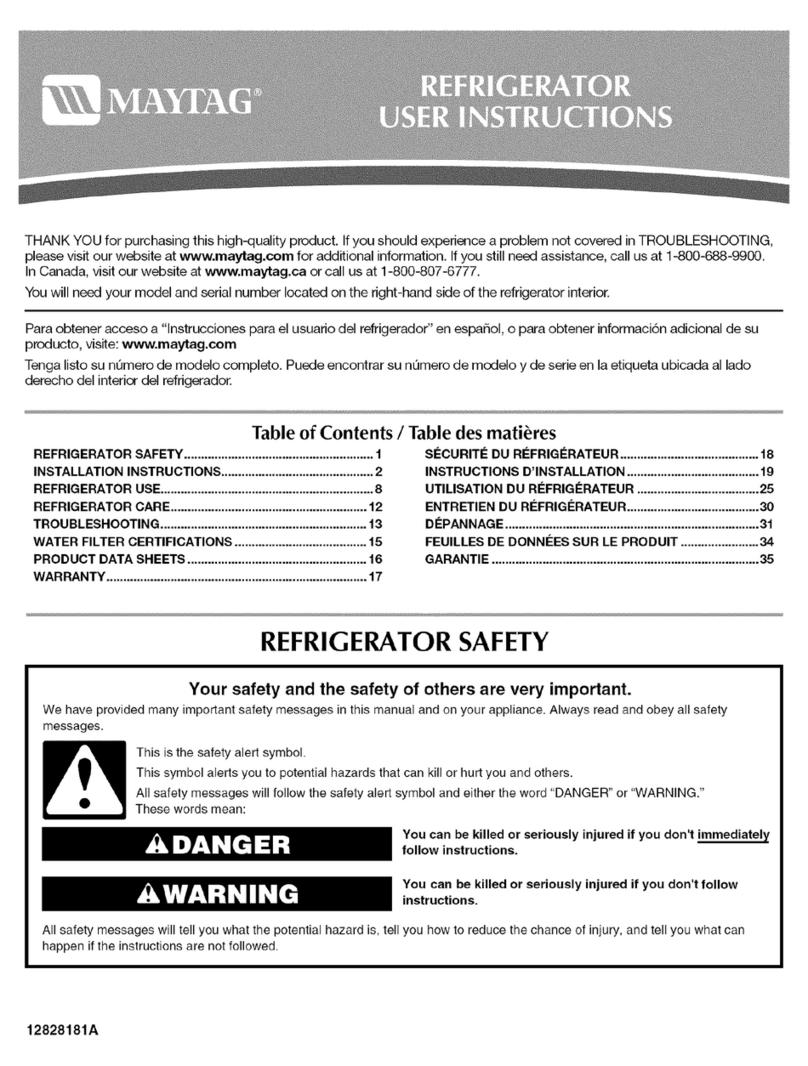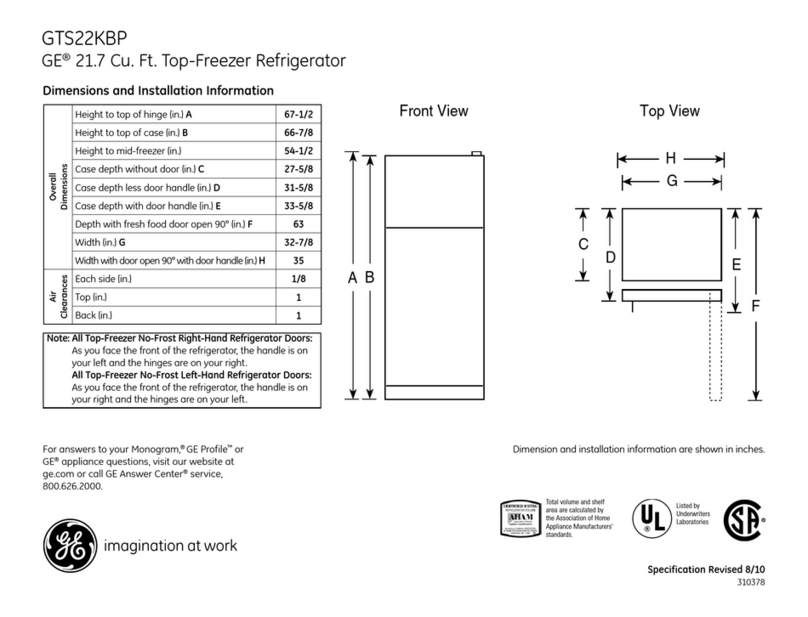
Care and cleaning of the refrigerator.
6
Cleaning the Outside
The door handles and trimRQVRPHPRGHOV&OHDQZLWKD
cloth dampened with soapy water. Dry with a soft cloth.
Keep the outside clean. Wipe with a clean cloth lightly
dampened with kitchen appliance wax or mild liquid dish
detergent. Dry and polish with a clean, soft cloth.
Do not wipe the refrigerator with a soiled dish cloth or wet
towel. These may leave a residue that can erode the paint.
Do not use scouring pads, powdered cleaners, bleach or
cleaners containing bleach because these products can
VFUDWFKDQGZHDNHQWKHSDLQW¿QLVK
The stainless steel doors and door handles RQVRPH
models) can be cleaned with a commercially available
stainless steel cleaner. Cleaners with oxalic acid such as
Bar Keepers Friend Soft Cleanser™ will remove rust, tarnish
and small blemishes. Use only a liquid cleanser free of grit
and rub in the direction of the brush lines with a damp soft
sponge. Do not use appliance wax or polish on the stainless
steel.
Cleaning the Inside
To help prevent odors, leave an open box of baking soda in
the fresh food and freezer compartments.
Unplug the refrigerator before cleaning.
If this is not practical, wring excess moisture out of sponge
or cloth when cleaning around switches, lights or controls.
8VHZDUPZDWHUDQGEDNLQJVRGDVROXWLRQ³DERXWD
WDEOHVSRRQPORIEDNLQJVRGDWRDTXDUWOLWHURIZDWHU
This both cleans and neutralizes odors. Rinse and wipe dry.
After cleaning the door gaskets, apply a thin layer of
petroleum jelly to the door gaskets at the hinge side. This
helps keep the gaskets from sticking and bending out of
shape.
$YRLGFOHDQLQJFROGJODVVVKHOYHVRQVRPHPRGHOVZLWK
KRWZDWHUEHFDXVHWKHH[WUHPHWHPSHUDWXUHGLȺHUHQFH
may cause them to break. Handle glass shelves carefully.
Bumping tempered glass can cause it to shatter.
Do not wash any plastic refrigerator parts in the
dishwasher.
Condenser
There is no need for routine condenser cleaning in normal
home operating environments. However, in environments
that may be particularly dusty
or greasy, the condenser should
be cleaned periodically for
HȻFLHQWUHIULJHUDWRURSHUDWLRQ
To clean the condenser, turn
the temperature control dial to
OFF. Sweep away or vacuum up dust.
For best results, use a brush specially designed for this
purpose. It is available at most appliance parts stores.
Moving the Refrigerator
Be careful when moving the refrigerator away from
WKHZDOO$OOW\SHVRIÀRRUFRYHULQJVFDQEHGDPDJHG
particularly cushioned coverings and those with embossed
surfaces.
Turn the leveling legs at each front corner of the refrigerator
counterclockwise until the rollers support
the refrigerator. Pull the refrigerator straight out and return it
to position by pushing it straight in. Moving
the refrigerator in a side direction may result in damage to
WKHÀRRUFRYHULQJRUUHIULJHUDWRU
When pushing the refrigerator back, make sure you don’t
UROORYHUWKHSRZHUFRUGRULFHPDNHUVXSSO\OLQHRQVRPH
models).
After rolling the refrigerator back into place, turn the
legs clockwise until the legs again bear the weight of the
refrigerator.
Light Bulb Replacement
To replace a burned-out bulb, unplug the refrigerator from
its electrical outlet, unscrew the bulb when cool and replace
it with an appliance bulb of the same or lower wattage.
Turning the control to the OFF position does not remove
power to
the light circuit.
Preparing for Vacation
For long vacations or absences, remove food and unplug
the refrigerator. Move the temperature control dial to the
OFF position, and clean the interior with a baking soda
VROXWLRQRIRQHWDEOHVSRRQPORIEDNLQJVRGDWRRQH
TXDUWOLWHURIZDWHU/HDYHWKHGRRUVRSHQ
Move the feeler arm to the STOPXSSRVLWLRQRUPRYHWKH
switch to the OFF position on the power switch model, and
VKXWRȺWKHZDWHUVXSSO\WRWKHUHIULJHUDWRU
,IWKHWHPSHUDWXUHFDQGURSEHORZIUHH]LQJKDYHDTXDOL¿HG
VHUYLFHUGUDLQWKHZDWHUVXSSO\V\VWHPRQVRPHPRGHOVWR
prevent serious property damage
GXHWRÀRRGLQJ
Preparing to Move
Secure all loose items such as grille, shelves and drawers by
taping them securely in place to prevent damage. Be sure
the refrigerator stays in an upright position during moving.
Cleaning the condenser coils.
